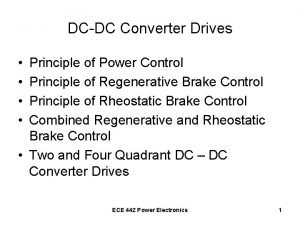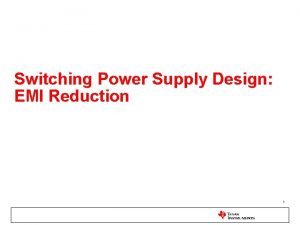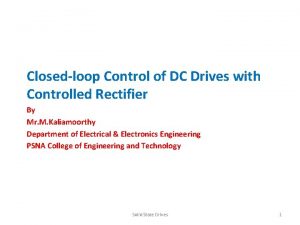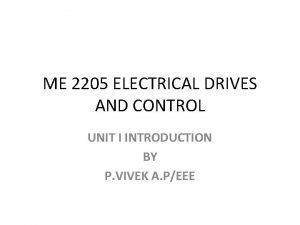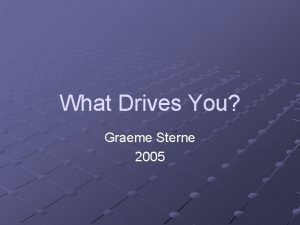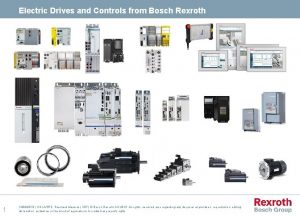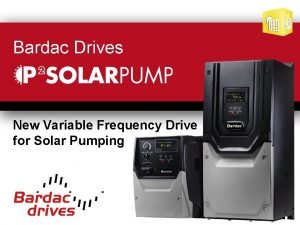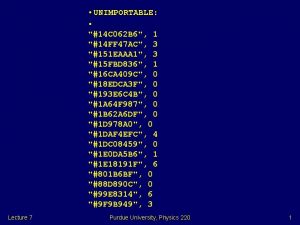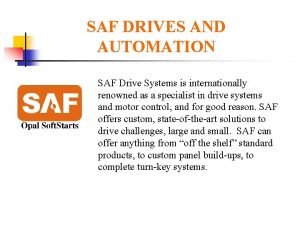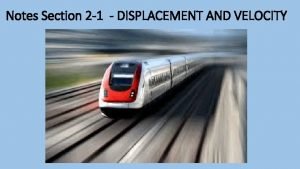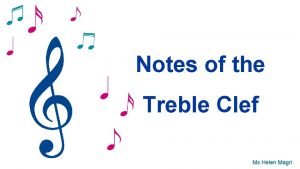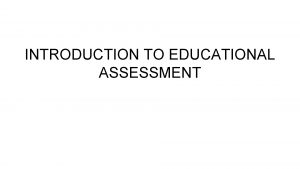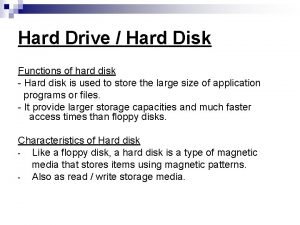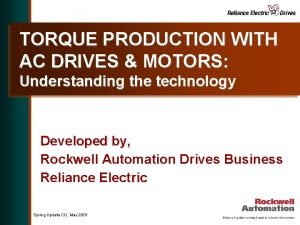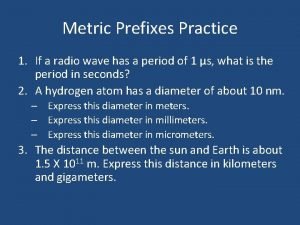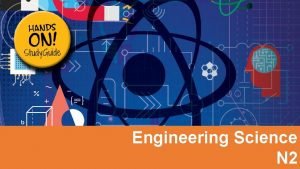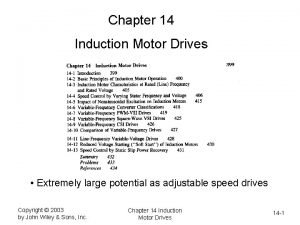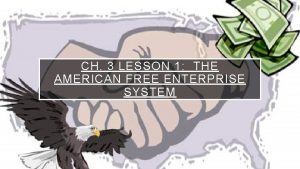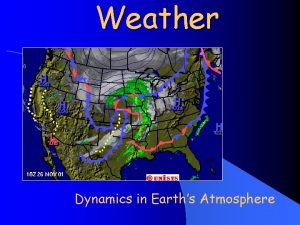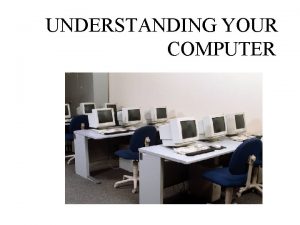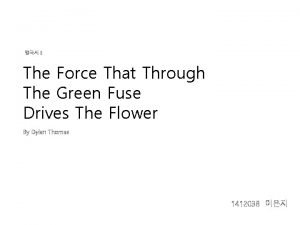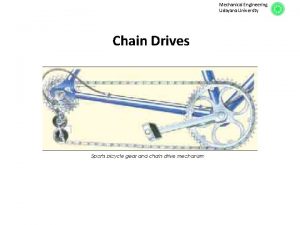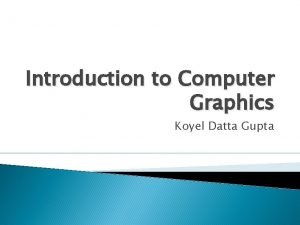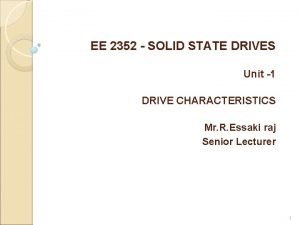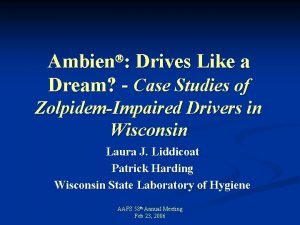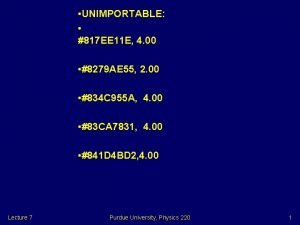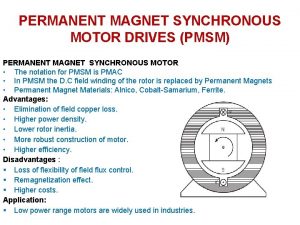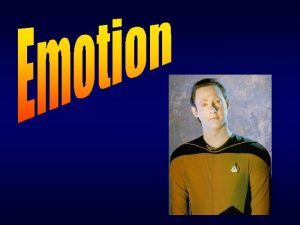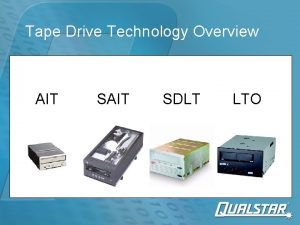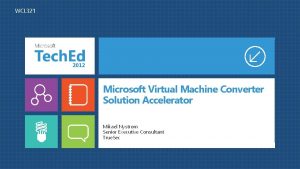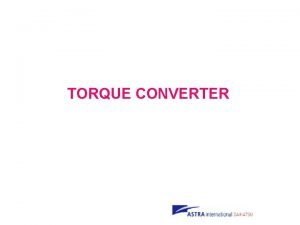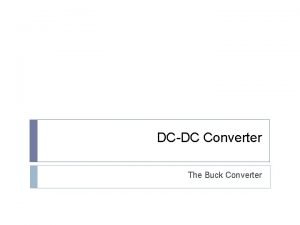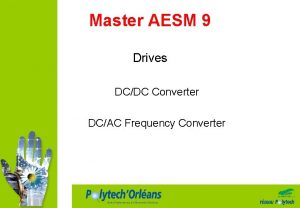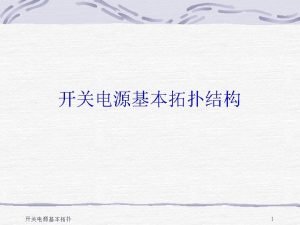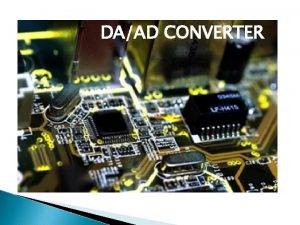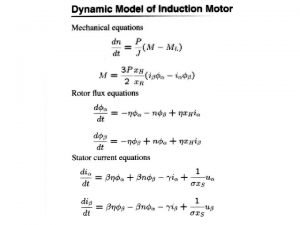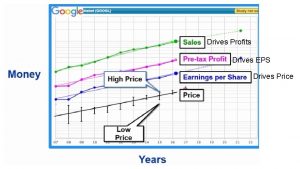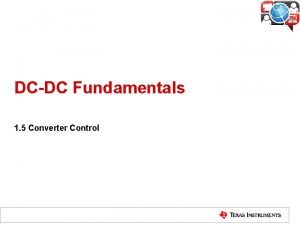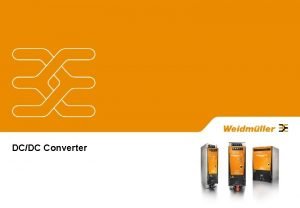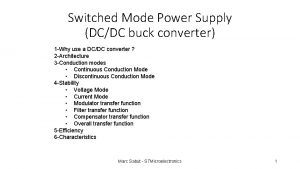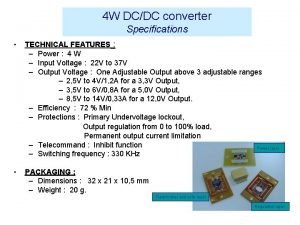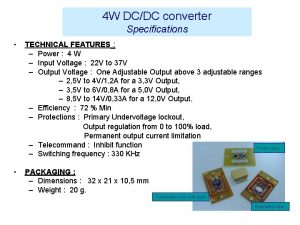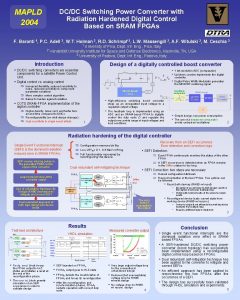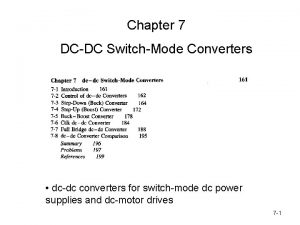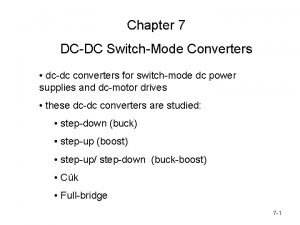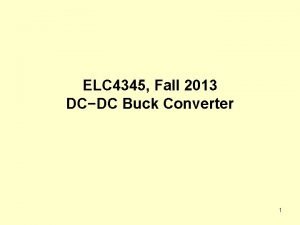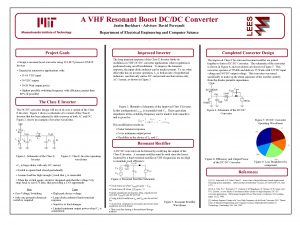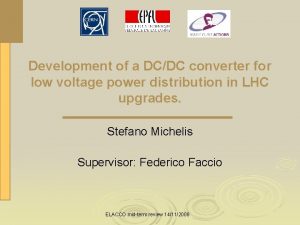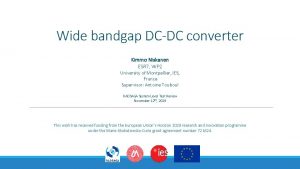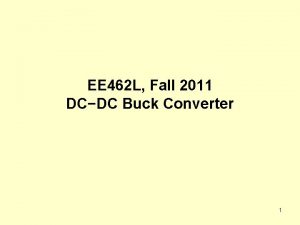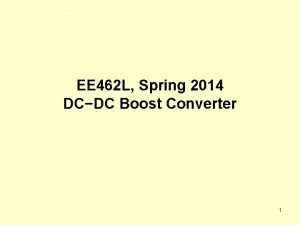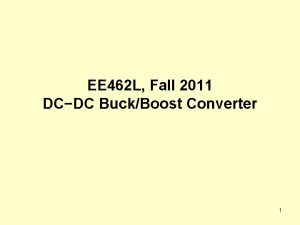DCDC Converter Drives Principle of Power Control Principle





































- Slides: 37

DC-DC Converter Drives • • Principle of Power Control Principle of Regenerative Brake Control Principle of Rheostatic Brake Control Combined Regenerative and Rheostatic Brake Control • Two and Four Quadrant DC – DC Converter Drives ECE 442 Power Electronics 1

Converter-fed DC Drive for a Separately-Excited Motor ECE 442 Power Electronics 2

Waveform Summary Highly Inductive Load Ripple-free Armature Current ECE 442 Power Electronics 3

Principle of Power Control • The average armature voltage is • The power supplied to the motor is ECE 442 Power Electronics 4

Principle of Power Control (continued) • The average value of the input current is • The equivalent input resistance seen by the source is Control Power Flow by adjusting the duty cycle ECE 442 Power Electronics 5

Principle of Power Control (continued) • To find the maximum peak-to-peak ripple current ECE 442 Power Electronics 6

ECE 442 Power Electronics 7

ECE 442 Power Electronics 8

ECE 442 Power Electronics 9

Application of a DC – DC Converter in Regenerative Braking ECE 442 Power Electronics 10

Waveform Summary Armature Current Continuous and Ripple-Free ECE 442 Power Electronics 11

Regenerative Braking • Begin with the motor turning by kinetic energy of the vehicle • Armature current flows as shown • Turn the transistor on • Armature current rises • Turn the transistor off • Diode turns on, current flows into the supply ECE 442 Power Electronics 12

Principle of Regenerative Braking • The average voltage across the transistor is • The regenerated power can be found from ECE 442 Power Electronics 13

Principle of Regenerative Braking (continued) • The voltage generated by the motor acting as a generator is • The equivalent load resistance of the motor acting as a generator is Control Power by changing k ECE 442 Power Electronics 14

Minimum Braking Speed Maximum Braking Speed ECE 442 Power Electronics 15

For this example, the field and armature need to be in series ECE 442 Power Electronics 16

ECE 442 Power Electronics 17

ECE 442 Power Electronics 18

Rheostatic Brake Control Dynamic Braking ECE 442 Power Electronics 19

Waveform Summary ECE 442 Power Electronics 20

Principle of Rheostatic Brake Control • The average current in the braking resistor is • The average voltage across the braking resistor is ECE 442 Power Electronics 21

Principle of Rheostatic Brake Control (continued) • The equivalent load resistance of the generator • The power dissipated in the resistor Rb is ECE 442 Power Electronics 22

ECE 442 Power Electronics 23

ECE 442 Power Electronics 24

ECE 442 Power Electronics 25

Combined Regenerative and Rheostatic Brake Control ECE 442 Power Electronics 26

Combined Regenerative and Rheostatic Brake Control (continued) • Used when the supply is partly “receptive” • Remove regenerative braking if line voltage is too high – – Turn thyristor TR on Divert current to RB Apply rheostatic braking TR is “self-commutated” ECE 442 Power Electronics 27

Two-Quadrant DC–DC Converter Drive ECE 442 Power Electronics 28

Quadrant Operation Summary Regenerative Braking Control Power Control ECE 442 Power Electronics 29

Power Control • Q 1 and D 2 operate • Q 1 ON, Vs applied to the motor • Q 1 turned OFF, D 2 “free-wheels” • Armature current decays ECE 442 Power Electronics 30

Regenerative Control • Q 2 and D 1 operate • Q 2 turned ON, motor acts as a generator, and the armature current rises • Q 2 turned OFF, motor returns energy to the supply via D 1 “freewheeling” ECE 442 Power Electronics 31

Four Quadrant DC-DC Converter Drive ECE 442 Power Electronics 32

Quadrant Operation Summary Forward Regeneration Reverse Power Control Forward Power Control Reverse Regeneration ECE 442 Power Electronics 33

Forward Power Control • Q 1 and Q 2 turned ON • Supply voltage appears across the motor • Armature current rises • Q 1 and Q 2 turned OFF • Armature current decays via D 3 and D 4 ECE 442 Power Electronics 34

Forward Regeneration • Q 1, Q 2, and Q 3 turned OFF • Turn Q 4 ON • Armature current rises and flows through Q 4, D 2 • Q 4 turned OFF, motor acts as a generator, returns energy back to the supply via D 1, D 2 ia reverses ECE 442 Power Electronics 35

Reverse Power Control • Q 3 and Q 4 turned ON • Supply voltage appears in the reverse direction across the motor • Armature current rises and flows in the reverse direction • Q 3 and Q 4 turned OFF • Armature current decays via D 1 and D 2 ECE 442 Power Electronics ia 36

Reverse Regeneration • Q 1, Q 3, Q 4 turned OFF • Q 2 turned ON • Armature current rises through Q 2 and D 4 • Q 2 turned OFF • Armature current falls and returns energy via D 3 and D 4 ECE 442 Power Electronics ia 37
 Cbi detroit
Cbi detroit Rheostatic brake
Rheostatic brake Buck converter and boost converter
Buck converter and boost converter Closed loop control of dc drives
Closed loop control of dc drives Electrical drives and control
Electrical drives and control Power trianlge
Power trianlge What drives you in life
What drives you in life What drives human behaviour
What drives human behaviour Bosch rexroth electric drives and controls
Bosch rexroth electric drives and controls Algo and amal
Algo and amal What drives people to explore
What drives people to explore Bardac drives
Bardac drives A car drives around a curve with radius of 42 m
A car drives around a curve with radius of 42 m Saf drives
Saf drives Find displacement
Find displacement A note treble clef
A note treble clef Http://quizizz.com
Http://quizizz.com Purpose of hard disk
Purpose of hard disk Ac drives basics
Ac drives basics Marissa's car accelerates uniformly
Marissa's car accelerates uniformly Mechanical drives and lifting machines n2
Mechanical drives and lifting machines n2 John drives very
John drives very Lesson 1 american free enterprise capitalism answers
Lesson 1 american free enterprise capitalism answers What drives weather
What drives weather There are two basic types of disk drives
There are two basic types of disk drives The force that through the green fuse drives the flower
The force that through the green fuse drives the flower Roller chain
Roller chain What drives computer graphics
What drives computer graphics 4 quadrant operation of induction motor
4 quadrant operation of induction motor Drives like a dream
Drives like a dream A car drives around a curve with radius of 42 m
A car drives around a curve with radius of 42 m Pmac motor magnet
Pmac motor magnet Organizing shared drives
Organizing shared drives What drives people
What drives people Ait tape
Ait tape Microsoft virtual machine converter download
Microsoft virtual machine converter download Igel universal desktop converter
Igel universal desktop converter Fungsi dari torque converter adalah
Fungsi dari torque converter adalah

